Kindergarten Math Worksheets

Introduction:
Mathematics is a fundamental skill that children begin to develop from a very young age. Kindergarten serves as the foundational stage for introducing mathematical concepts in a fun and engaging way. In this guide, we will explore the components of an ideal kindergarten math worksheet and delve into effective practice methods for young learners.
Elevate your child’s early mathematical skills with our engaging collection of Kindergarten Math Worksheets. Tailored for young learners, these worksheets provide a playful yet effective platform for introducing fundamental math concepts. Through colorful visuals and age-appropriate exercises, children will explore counting, basic addition and subtraction, shapes, and more. Our Kindergarten Math Worksheets, enriched with the keyword “kindergarten math worksheets,” are meticulously designed to make learning enjoyable and accessible. Whether it’s recognizing numbers or solving simple problems, each worksheet is crafted to support your child’s mathematical development in a fun and interactive way. Empower your little one with a strong mathematical foundation from the very beginning, setting them on a path of confidence and enthusiasm for future learning.
free kindergarten tracing & painting worksheets
Components of a Kindergarten Math Worksheets
Age-Appropriate Content:
Kindergarten math worksheets should focus on age-appropriate content, such as counting, number recognition, basic shapes, and simple addition and subtraction.
Engaging Visuals:
Incorporating colorful and engaging visuals can make learning more enjoyable for kindergarteners. Pictures of animals, objects, or familiar settings can make math concepts relatable.
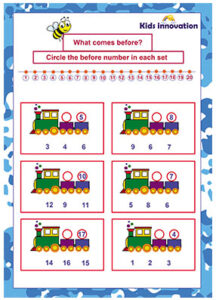
Clear Instructions:
Worksheets should provide clear and simple instructions that can be easily understood by young children. These instructions may include verbal cues, like “Count the apples,” or visual cues, like arrows pointing to the correct answers.
Variety of Activities:
Effective math worksheets offer a variety of activities to cater to different learning styles. This may include coloring, tracing, matching, and connecting dots to reinforce mathematical concepts.
Progressive Difficulty:
Kindergarten math worksheets should start with basic concepts and progressively increase in difficulty. This helps build a strong foundation without overwhelming the child.
Effective Practice Methods for Kindergarten Math

free kindergarten tracing & painting worksheets
Hands-On Activities:
Hands-on activities, like counting objects, grouping items, and using tangible materials like counting beads or blocks, help children visualize and internalize mathematical concepts.
Games and Puzzles:
Incorporate math games and puzzles that make learning fun. Games like “Math Bingo” or puzzles that involve arranging shapes or numbers can enhance engagement.

Storytelling:
Storytelling can be a powerful method to introduce math concepts. Create math-related stories or scenarios that encourage children to use numbers and shapes in a context they can relate to.
Technology Integration:
Educational apps and interactive websites designed for kindergarten math can be effective tools for practicing math skills. These platforms often provide instant feedback, making learning interactive and engaging.
Group Activities:
Encourage group activities that involve peer interaction. This can include math-related discussions, collaborative problem-solving, and cooperative games that reinforce math skills.

Real-Life Applications:
Relate math concepts to everyday life. For example, counting objects at the grocery store, identifying shapes in the environment, or practicing addition and subtraction with household items.
Regular Practice:
Consistency is key. Encourage regular, short practice sessions rather than infrequent long sessions. Brief, daily math exercises are more effective for retention.
Positive Reinforcement:
Offer positive reinforcement and praise when children successfully complete math activities. This builds their confidence and motivates them to continue learning.
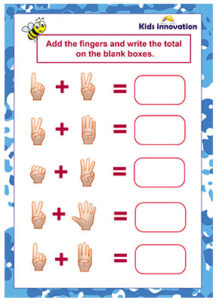
Parental Involvement:
Parents can play a crucial role in supporting kindergarten math learning. They can engage in math-related activities at home, reinforce what is taught at school, and communicate with teachers for a holistic approach to math education.

Kindergarten math worksheets and effective practice methods play a pivotal role in developing a strong mathematical foundation in young learners. By incorporating age-appropriate content, engaging visuals, and interactive practice methods, educators and parents can ensure that children enjoy and excel in their early math education. With consistent, supportive, and creative teaching, children will be well-prepared for future mathematical challenges.
Number Names Worksheets:
A Number Names Worksheet for Kindergarten is an educational resource designed to help young children learn to recognize and write number words. These worksheets typically feature a series of exercises and activities that focus on the names of numbers, helping kids grasp the concept of numeracy in a fun and engaging way.
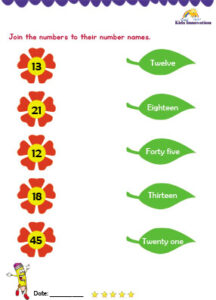
Here’s what you might find on a Number Names Worksheet for Kindergarten:
Number Recognition: Children practice recognizing and matching written number words (e.g., “one,” “two,” “three”) to the corresponding numerals.
Handwriting Practice: Kids get the opportunity to trace and write number words to improve their fine motor skills and handwriting.
Counting and Drawing: Some worksheets include activities where children count objects and then write the corresponding number word.
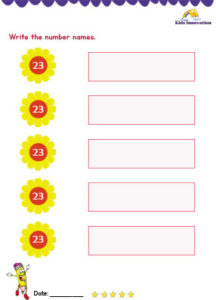
Word Puzzles: Word search puzzles or crossword-style games with number words can make learning more enjoyable.
Coloring and Drawing: There might be coloring activities involving numbers and their words, allowing children to express their creativity.

Story Problems: Simple story problems using number words encourage kids to apply their newfound knowledge in real-life situations.
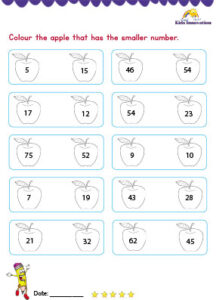
These worksheets are a valuable resource for kindergarten teachers and parents who want to support their children’s early math and literacy development. They make learning numbers and number names an interactive and engaging experience for young learners.

Kindergarten Even & Odd Worksheet:

Ascending order Descending order worksheet
An ascending order and descending order worksheet is a common educational tool used in mathematics to help students practice and understand the concept of ordering numbers. This worksheet typically consists of a list of numbers or a set of numerical problems that students need to arrange in either ascending (from smallest to largest) or descending (from largest to smallest) order.
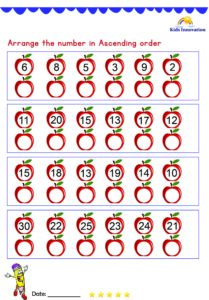
Here’s an example of what such a worksheet might look like:
Ascending Order Worksheet:
Arrange the following numbers in ascending order: 8, 3, 10, 2, 5.
Answer: 2, 3, 5, 8, 10
Place these fractions in ascending order: 1/4, 2/5, 3/6, 5/8.
Answer: 1/4, 2/5, 3/6, 5/8
Order these decimal numbers from smallest to largest: 0.75, 0.2, 0.9, 0.35.
Answer: 0.2, 0.35, 0.75, 0.9
Descending Order Worksheet:
Rearrange the following numbers in descending order: 12, 7, 18, 4, 14.
Answer: 18, 14, 12, 7, 4
Sort these fractions in descending order: 3/6, 2/3, 5/8, 1/2.
Answer: 5/8, 2/3, 1/2, 3/6
Arrange these decimal numbers from largest to smallest: 0.6, 0.45, 0.8, 0.25.
Answer: 0.8, 0.6, 0.45, 0.25
Ascending and descending order worksheets are valuable for reinforcing the fundamental skill of ordering numbers, which is crucial in various mathematical operations and real-life situations. They help students gain confidence in comparing and organizing numerical values, which is essential for problem-solving and data analysis.
Number Names worksheet

free kindergarten tracing & painting worksheets
The learning process of shapes in kindergarten mathematics
The learning process of shapes in kindergarten mathematics is a fundamental step in a child’s mathematical development. It provides a strong foundation for more advanced mathematical concepts. Here’s an overview of the typical learning process for shapes in kindergarten:

Introduction to Basic Shapes:
Kindergarten mathematics often begins with the introduction of basic shapes like circles, squares, triangles, and rectangles. These shapes are simple and easy for young children to recognize.
Visual Recognition:
Young learners start by visually recognizing these shapes in their environment. Teachers and parents can use various tools, including flashcards and books with pictures of these shapes, to facilitate recognition.
Shapes in Everyday Objects:
Children are encouraged to identify these basic shapes in everyday objects. For example, they might recognize a circular clock, a square window, or a triangular piece of pizza.
Hands-On Activities:
Hands-on activities help reinforce shape recognition. These activities may involve sorting, such as grouping objects by shape, or creating simple art projects using basic shapes.
Understanding Characteristics:
Children are taught the characteristics of each shape. For instance, they learn that a square has four equal sides and four right angles, while a circle has no sides and no angles.
Advanced Shapes:
After mastering basic shapes, the learning process may introduce more advanced shapes, like ovals, diamonds, pentagons, and hexagons.
Comparing and Contrasting Shapes:
Kindergarteners learn to compare and contrast shapes, understanding how they differ in terms of sides, angles, and other attributes.
Spatial Awareness:
Shape recognition helps develop spatial awareness. Children learn to understand how shapes fit together and how they relate to one another in space.

Geometric Vocabulary:
Children are introduced to geometric vocabulary, including terms like “vertices” (corners) and “edges.” They start to use these terms when describing shapes.
Pattern Recognition:
Recognizing and creating patterns using shapes is another aspect of kindergarten mathematics. Children learn to create simple sequences using shapes, which can lead to a deeper understanding of math concepts.
Incorporating Shapes into Math Curriculum:
Shapes are integrated into broader math topics, such as measurement and geometry. Children learn how shapes are used in measuring area and perimeter.
parenting tips for toddlers
Assessment and Feedback:
Teachers and parents may assess a child’s shape knowledge through quizzes, worksheets, and observation. Feedback is provided to support further learning.
Practical Application:
Children are encouraged to use their shape knowledge in real-world situations, such as identifying shapes in buildings, road signs, and nature.

Art and Creative Expression:
Art projects involving shapes allow children to express their creativity while reinforcing their understanding of geometric concepts.
Consolidation and Readiness:
By the end of kindergarten, children should have a solid foundation in recognizing, understanding, and using shapes. This prepares them for more advanced mathematical concepts in later grades.
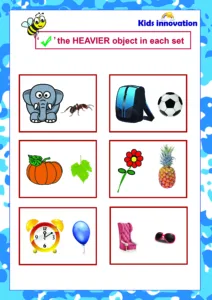
The learning process of shapes in kindergarten mathematics is not just about memorization but about fostering a deep understanding of geometric concepts through hands-on activities and practical applications. It sets the stage for a child’s mathematical journey by building critical spatial and analytical skills.
Kindergarten Bigger object & Smaller Object Worksheet
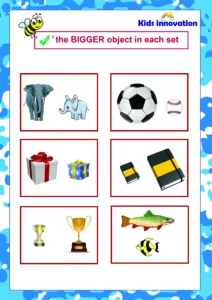
Kindergarten counting mathematics worksheet
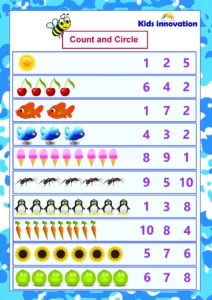
Kindergarten Math worksheets collection in Shutterstock click here
https://www.shutterstock.com/search/kindergarten-math-worksheets
 Skip to content
Skip to content 
21 thoughts on “Kindergarten Math Worksheets”